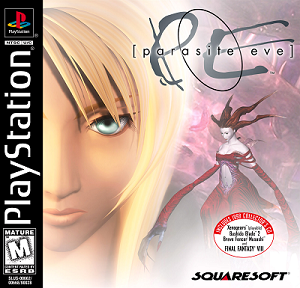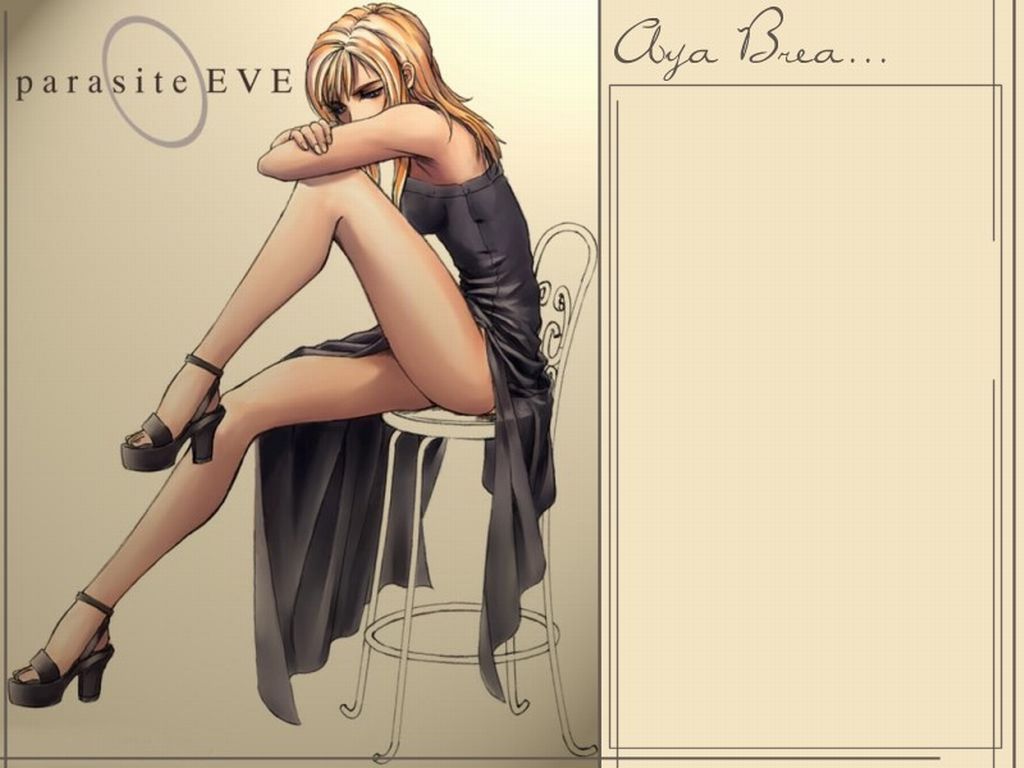“They don’t make them like they
used to” is a phrase that is becoming more and more relevant as far as gaming
as concerned. Looking at a company like Square Enix, it might be difficult to
realize that, once upon a time, their non-Final Fantasy titles weren’t relegated
to pointless mobile titles and blatant cash grabs, but were instead considered
to be some of their best work. In between Final Fantasy titles, gamers were
treated to unique games such as Chrono Trigger, Xenogears, and the subject of
this review, Parasite Eve. Originally based on a Japanese horror novel,
Parasite Eve blended concepts from the newly popularized Survival Horror genre
with Square’s well-known style of quality RPG, creating one of the most unique
games of the PS1 era. But is this ‘Cinematic RPG’ worth revisiting like other
Squaresoft classics?

STORY
Set in New York City in the year
1997, Parasite Eve introduced gamers to the character Aya Brea, a no-nonsense
NYPD officer who becomes embroiled in a strange and terrifying series of events
that plague her city. While attending an opera performance on Christmas Eve, Aya
witnesses the spontaneous combustion of the entire audience, with Aya
mysteriously emerging as the only survivor. The act was performed by the lead
actress of the opera, whose body has been taken over by a creature who
identifies herself as ‘Eve.’ Eve tells a confused Aya that it is her mitochondria
that spared her from death, and that the time will soon come for the
mitochondria to be set free. What follows is a six-day war between Aya and Eve,
as Aya attempts to put down the rebellion of the apparently sentient
mitochondria, as well as uncover why she is apparently immune to Eve’s power.
Keeping in line with the ‘cinematic’
motif of the game, Parasite Eve is structured and plays out like a summer sci-fi
blockbuster, but fortunately it is a pretty good one. The pseudo-science and
technobabble used to explain the sentience of the Mitochondria sounds like
something right out of an M. Night Shyamalan movie, but it does remain
consistent throughout a story which, to its credit, sticks to its own internal
logic. Aya is a great female protagonist, and the remaining cast, while small,
is also well-rounded and engaging. Outside of a couple of grammatical errors,
the game’s writing is pretty solid for a 90s RPG, showing that Square was
putting more effort into their localization after the spotty translation of
some of their earlier games (Final Fantasy VII included). In short, while
Parasite Eve’s story doesn’t reach the heights of some other games, it’s still
entertaining and engrossing enough to keep you playing, and it’s certainly
better than the pen-vomit that would serve as plot in the two sequels.
GAMEPLAY
 Parasite Eve isn’t a very long
game, taking about ten hours or so to complete, although there is a post-game
dungeon accessible through a New Game +. The game takes place across six days/chapters,
with each day adding new locations to the world map of New York City.
Generally, each chapter will have a single location serve as the main sequence
of the chapter, following some exposition scenes.
Parasite Eve isn’t a very long
game, taking about ten hours or so to complete, although there is a post-game
dungeon accessible through a New Game +. The game takes place across six days/chapters,
with each day adding new locations to the world map of New York City.
Generally, each chapter will have a single location serve as the main sequence
of the chapter, following some exposition scenes.
Combat in Parasite Eve is very
similar to another Squaresoft RPG, Vagrant Story, with a combination of
real-time and turn based mechanics that actually works. Combat works on an
Active Time bar similar to the Final Fantasy games, but Aya is able to move
around the battlefield in real time. When the AT bar is full, Aya is able to
use an item, one of her Parasite Energy powers (the game’s equivalent of
spells, which drains the game’s equivalent of MP), or attack with her equipped
weapon. When selecting to attack, a green dome will show the range of Aya’s
weapon, and this range, along with other factors such as the weapon’s stats,
will determine how much damage is dealt.
The core concepts of Parasite Eve’s
gameplay are interesting, but I do have a few gripes. First of all, the
controls aren’t that great. This is a common problem with PS1 action games, but
its slightly more egregious here due to the game’s nature as a horror/RPG
hybrid. While Parasite Eve does use analog control to move Aya, she runs so
slowly that it can actively become a hindrance during combat. In trying to
mimic the direction of horror games such as Resident Evil, Square made the
mistake of incorporating some of the design flaws, including fixed camera
angles which obscure key items. Unfortunately, they also included some of the
more annoying aspects of RPGs as well, such as a high random encounter rate.
Combining these problems makes exploration rather tedious. That’s not to say
the mix of horror and RPG is entirely a bad idea, but it does come with some
inherent problems native to both genres at the time of their release, although
to Parasite Eve’s credit it didn’t incorporate the horrible tank controls of
Resident Evil (unlike Parasite Eve 2, which plays like a bad RE clone).
Finally, systems such as weapon customization aren’t explained that well in the
game, meaning the player will have to experiment a lot or look up clearer instructions
if they want to make stronger equipment.
PRESENTATION
I’ve praised the visual direction
of PS1 Squaresoft games before, and Parasite continues the trend, with gorgeous
pre-rendered backgrounds and well done FMV sequences. The in-game character
models show a major improvement over the Popeye-armed denizens of Final Fantasy
VII, as well, and they all animate very well. Of particular note is the enemy
designs, which wouldn’t feel out of place in a standard horror game- there are
lots of frightening depictions of mutated animals, both in and out of the FMVs.
I would be remiss if I didn’t point out Yoko Shimomura’s excellent score for
the game, which provides a suitable sense of atmosphere throughout.
CONCLUSION
Parasite Eve is a noteworthy
experiment for Square. While I did have some issues with the gameplay, which at
times proved frustrating, it is still one of the most unique PS1 games ever
made, and it does provide a good story and an outstanding presentation.
Frankly, this really is the kind of game that just wouldn’t be made anymore.
For those who are curious or looking to play some of the PS1’s more interesting
classics, the game is available on the Playstation Network for a very reasonable
$5.99.

SCORE- B- (Good)

No comments:
Post a Comment